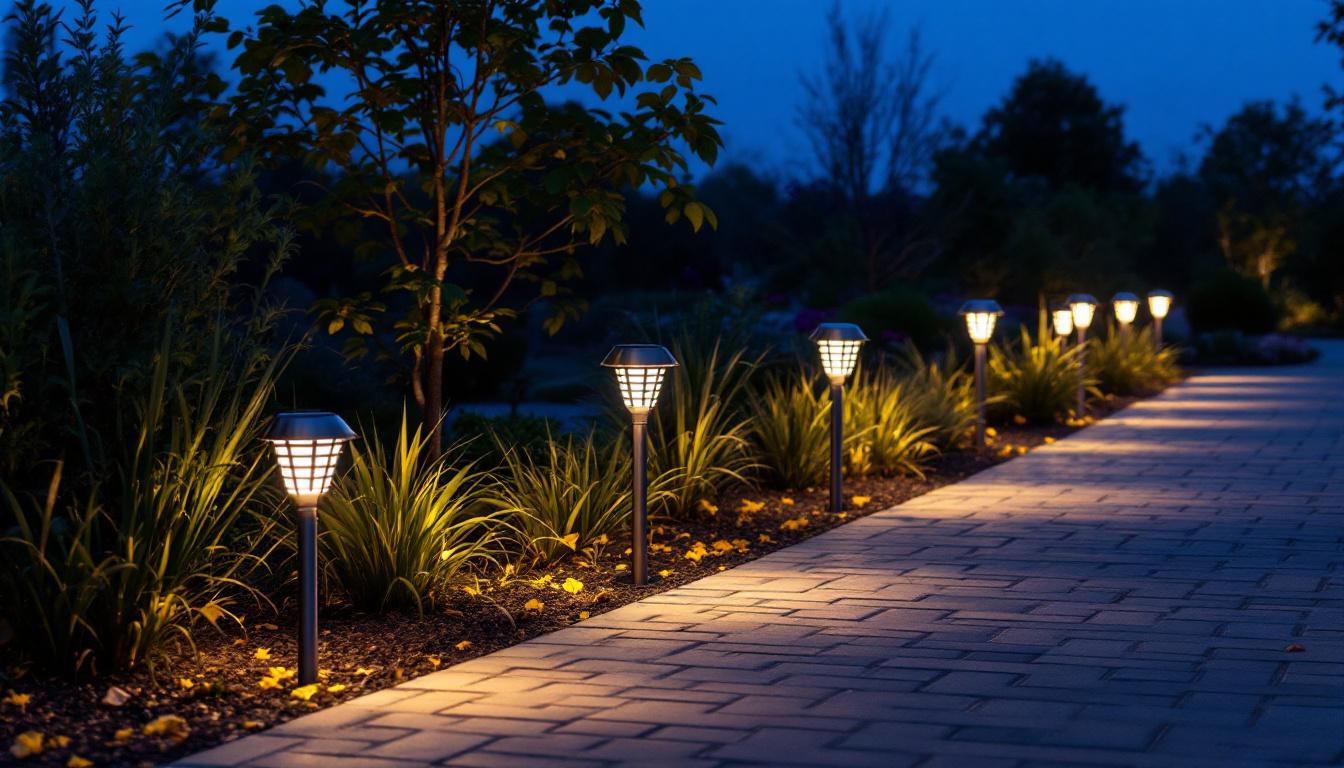
In the ever-evolving landscape of the lighting industry, T12 bulbs have played a significant role in shaping the way spaces are illuminated. Initially introduced as a standard lighting solution, these fluorescent tubes have undergone remarkable transformations over the years. This article delves into the history, advancements, and future prospects of T12 bulbs, providing valuable insights for lighting contractors and industry professionals.
The T12 bulb, characterized by its 12/8 inch diameter, emerged as a staple in both commercial and residential lighting applications. Its design was straightforward, featuring a glass tube filled with low-pressure mercury vapor and a phosphor coating on the interior surface. This combination allowed for efficient light production, making T12 bulbs a popular choice for various settings.
Initially, T12 bulbs gained traction due to their affordability and availability. They became the go-to lighting solution for offices, schools, and retail spaces. The ability to produce a significant amount of light while consuming relatively low energy made them an attractive option for cost-conscious consumers.
As the demand for energy-efficient solutions grew, T12 bulbs continued to dominate the market. Their widespread use was bolstered by the development of electronic ballasts, which improved their performance and lifespan, further solidifying their place in the lighting industry.
Over time, advancements in lighting technology led to the emergence of more efficient alternatives, such as T8 and T5 bulbs. These newer options offered improved energy efficiency and longer lifespans, prompting many businesses to reconsider their lighting choices. However, T12 bulbs remained relevant due to their compatibility with existing fixtures and the extensive infrastructure already in place.
Moreover, the T12 bulb’s design allowed for a variety of applications, from industrial warehouses to cozy cafes, where warm lighting was essential for creating an inviting atmosphere. The adaptability of T12 bulbs made them a versatile choice, as they could be used in a range of settings without requiring significant modifications to existing electrical systems. This ease of integration contributed to their sustained popularity, even as newer technologies emerged.
Additionally, the T12 bulb’s historical significance cannot be overlooked. It played a crucial role in the evolution of lighting standards, influencing regulations and energy policies that aimed to reduce energy consumption in the mid to late 20th century. As energy costs rose and environmental concerns became more pronounced, the T12 bulb’s legacy paved the way for a greater emphasis on sustainability in lighting, leading to the eventual push for more eco-friendly alternatives that we see today.
As environmental concerns and energy regulations became more prominent, the lighting industry faced increasing pressure to adopt more sustainable practices. T12 bulbs, while still widely used, began to fall out of favor as energy-efficient lighting solutions gained popularity. This shift prompted manufacturers to innovate and adapt their offerings. The transition was not merely about replacing old technology; it represented a fundamental change in how businesses and consumers viewed energy consumption and its impact on the planet.
In response to growing environmental concerns, regulatory bodies implemented stricter energy efficiency standards. These regulations aimed to phase out less efficient lighting options, including T12 bulbs. As a result, many manufacturers ceased production of T12 bulbs, pushing the industry towards more sustainable alternatives. The U.S. Department of Energy, for instance, set specific benchmarks that required lighting products to meet higher efficiency ratings, effectively driving innovation in LED technology and other energy-saving solutions.
Lighting contractors were faced with the challenge of navigating this transition. While T12 bulbs were still functional, the long-term benefits of upgrading to T8 or T5 systems became increasingly apparent. Contractors began to educate clients on the advantages of these newer technologies, highlighting their energy savings and reduced environmental impact. Additionally, they emphasized the potential for improved lighting quality, which could enhance workplace productivity and employee satisfaction. The conversation around lighting shifted from mere functionality to a broader discussion about well-being and efficiency in the workplace.
For many businesses, retrofitting existing T12 fixtures to accommodate T8 or T5 bulbs became a viable solution. This approach allowed companies to maintain their current lighting infrastructure while reaping the benefits of improved efficiency. Lighting contractors played a crucial role in facilitating this transition, providing expertise on retrofitting options and helping clients make informed decisions. They often conducted energy audits to assess the potential savings and return on investment, further encouraging businesses to embrace these upgrades.
Moreover, the retrofitting process often included the installation of electronic ballasts, which further enhanced the performance of the new bulbs. This combination of new technology and existing fixtures allowed businesses to maximize their lighting efficiency without incurring significant costs. In addition to energy savings, many companies discovered that the new lighting systems required less maintenance and had longer lifespans, translating to lower operational costs over time. As the industry evolved, the focus on sustainability became intertwined with economic benefits, making the case for energy-efficient lighting even more compelling for businesses of all sizes.
Despite the decline in popularity, T12 bulbs have not completely vanished from the market. They continue to be used in specific applications where their unique characteristics are still beneficial. Understanding the current landscape of T12 bulbs is essential for lighting contractors who may encounter them in their projects.
T12 bulbs are still found in certain niche applications, particularly in older buildings where retrofitting may not be feasible. For example, in warehouses and industrial settings, T12 bulbs may still be used due to their ability to provide high levels of illumination over large areas. Additionally, some businesses may prefer T12 bulbs for their warm color temperature, which can create a more inviting atmosphere. In settings like art galleries or vintage shops, the softer light emitted by T12 bulbs can enhance the appearance of products, making them more appealing to customers.
Lighting contractors should be prepared to address the needs of clients who still utilize T12 bulbs. This may involve offering maintenance services, replacement options, or guidance on potential upgrades. Understanding the specific requirements of these applications can help contractors provide tailored solutions. Furthermore, educating clients about the differences in light quality and energy consumption between T12 and newer bulb technologies can empower them to make informed decisions about their lighting systems.
While T12 bulbs are not as widely produced as they once were, they are still available through various suppliers. However, contractors should be aware of potential supply chain challenges, as the production of T12 bulbs has decreased significantly. This can lead to fluctuations in availability and pricing, making it essential for contractors to plan ahead when sourcing these products. Some suppliers may even offer refurbished or surplus T12 bulbs, which can be a cost-effective solution for clients looking to maintain their existing lighting systems.
Moreover, as manufacturers shift their focus towards more efficient technologies, the long-term viability of T12 bulbs remains uncertain. Contractors should stay informed about industry trends and be proactive in recommending energy-efficient alternatives to their clients. This could include suggesting T8 or LED options that not only provide better energy efficiency but also longer lifespans and lower maintenance costs. By staying ahead of the curve, contractors can ensure they are providing the best possible solutions for their clients while navigating the complexities of the current lighting market.
As the lighting industry continues to evolve, the future of T12 bulbs is likely to be shaped by ongoing advancements in technology and changing consumer preferences. While these bulbs may not dominate the market as they once did, they will still have a place in specific applications.
One potential avenue for T12 bulbs is their integration into smart lighting systems. As smart technology becomes increasingly prevalent, there may be opportunities to retrofit existing T12 fixtures with smart controls. This could enhance their functionality and allow businesses to take advantage of features such as remote control, scheduling, and energy monitoring.
Lighting contractors can play a pivotal role in this integration process, helping clients transition to smart lighting solutions while maintaining their existing T12 infrastructure. By offering innovative solutions, contractors can position themselves as valuable partners in the evolving lighting landscape.
As the industry moves forward, education and awareness will be crucial in guiding clients toward the most suitable lighting solutions. Lighting contractors should take the initiative to inform their clients about the benefits of energy-efficient alternatives while also acknowledging the continued relevance of T12 bulbs in certain contexts.
By fostering open communication and providing comprehensive information, contractors can empower clients to make informed decisions that align with their goals and values. This collaborative approach will not only enhance client satisfaction but also contribute to a more sustainable lighting industry overall.
T12 bulbs have undergone a significant evolution within the lighting industry, transitioning from a widely used standard to a more niche option in the face of growing energy efficiency demands. While their popularity has waned, they still hold value in specific applications, and understanding their history and current status is essential for lighting contractors.
As the industry continues to innovate, the future of T12 bulbs will likely be influenced by technological advancements and changing consumer preferences. By staying informed and adaptable, lighting contractors can navigate this evolving landscape, ensuring they provide the best solutions for their clients.
Ultimately, the evolution of T12 bulbs serves as a reminder of the importance of adaptability in the lighting industry. As new technologies emerge and regulations change, lighting contractors must remain proactive in their approach, embracing innovation while honoring the legacy of established solutions.
As you embrace the dynamic changes in the lighting industry and seek out the best solutions for your clients, LumenWholesale is here to support you. We offer an extensive selection of spec-grade lighting products that meet the highest industry standards, ensuring reliability and performance. With our commitment to unbeatable wholesale prices and the convenience of free shipping on bulk orders, you can equip your projects with premium lighting while enjoying significant savings. Don’t let inflated markups dim your vision—choose LumenWholesale for Wholesale Lighting at the Best Value and illuminate your work with quality, affordability, and convenience.

Illuminate your projects with expert insights on outside pot lights.

Discover why lighting contractors should prioritize solar walkway lights in their projects.

Discover everything about Light Balancer—its benefits, installation tips, and how it enhances lighting efficiency.

Discover the top benefits of sconce lighting fixtures for lighting contractors.